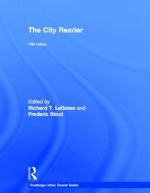
|
| Name: _________________________ | Period: ___________________ |
This quiz consists of 5 multiple choice and 5 short answer questions through Part I: The Evolution of Cities.
Multiple Choice Questions
1. The author of "City Origins" and "Cities and European Civilization" describes the growth of cities in Western Europe as historically bound by two elements: a middle class, and what?
(a) Democratic voting.
(b) Community organization.
(c) Freedom of the press.
(d) The rule of the King.
2. When was "The Polis" first published?
(a) 1947.
(b) 1952.
(c) 1951.
(d) 1949.
3. When was the Second Edition of The City Reader published in an expanded version?
(a) 1996.
(b) 2000.
(c) 1998.
(d) 1999.
4. Engels writes that it is what that has crammed the people into squalor in "The Great Towns"?
(a) The philosophical epoch.
(b) The industrial epoch.
(c) The critical epoch.
(d) The musical epoch.
5. When was Friedrich Engels born?
(a) 1814.
(b) 1818.
(c) 1822.
(d) 1820.
Short Answer Questions
1. Whose insights on urban planning in the face of conflict does LeGate claim to be intellectually rigorous in "How to Study Cities"?
2. Who wrote "City Origins" and "Cities and European Civilization"?
3. Whose "thoughtful prescriptions for urban poverty" are discussed by LeGate in "How to Study Cities"?
4. V. Gordon Childe writes in "The Urban Revolution" that the three revolutions separating the major eras are the urban, the industrial and what?
5. V. Gordon Childe discusses the evolution of cities in Spain, Britain, and Germany during what period in "The Urban Revolution"?
|
This section contains 225 words (approx. 1 page at 300 words per page) |

|




